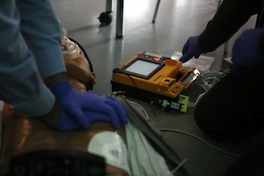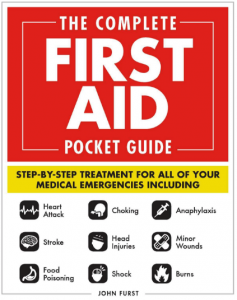A defibrillator/Automatic External Defibrillator (AED) or ‘defib’ is the device used to deliver an electric shock to a patient’s heart in a cardiac arrest. Mostly seen on medical TV programs, they’re in hospitals, ambulances, even public places have their own, all in various shapes, sizes and designs. The ones for public use however are automatic and AEDs simple and easy to use, you open the case and the machine starts talking to you explaining what you need to do.
They all however follow the same underlying principle, by applying two ‘pads’ (which are extremely sticky), to a patients bare chest (positions shown on the defib), an automatic defibrillator will then analyse the patient’s heart rhythm. If they deem the patient to have no effective cardiac output, i.e they are having a cardiac arrest either there is no heart beat or not effective, the machine will advise that a shock is required. All you would have to do is press the shock button (while making sure everyone is standing back) and the machine will deliver an electric shock to attempt to restart the heart. After which or even before recommending the shock the machine may tell you to perform CPR, often counting the beat out to you.
It is important to listen to the machine and when it suggests to ‘shock’ to make sure yourself and others are standing at least a metre away before delivering the shock.


